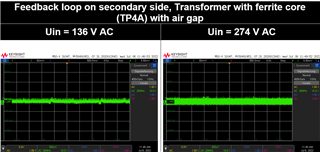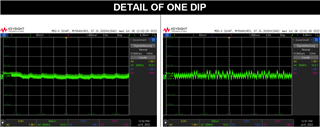Other Parts Discussed in Thread: TL431
Team,
Customer has made a Flyback design based on UCC28C45:
Vin : 85 to 265V, Vout = 17.5V, Iout = 0.7A
The design shows on the COMP output an oscillation tendency or instability depending on the input voltage.
-What could be the cause?
-Can it be because we exceed the current limit of the output?
Here are some oscillscopes plots.
Thanks in advance,
A.





